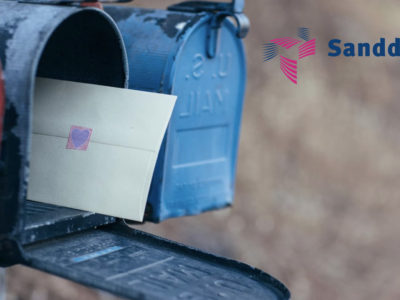Turnover, satisfaction, motivation

SELECTA
“We reversed the declining trend and once again grew in terms of turnover, client satisfaction and employee motivation.”
Kristien Jansen, Commercial Director of Selecta
Winner Commercial Director of the Year Award
As I enter Selecta’s offices the first thing that greets me is the authentic and delicious aroma of fresh coffee. Selecta is the leading vending and coffee services company in Europe. The market leader (with a turnover of more than 740 million euros) employs 4,300 motivated people, who provide 6 million customers in 18 countries with self-selected coffee, soda, snacks and candy on a daily basis, from 140,000 workplace and public sales points. The company was founded in 1957 in Switzerland, where its head office is located.
I’m visiting commercial director Kristien Jansen. Before starting the interview I help myself to a delicious cup of coffee, sit down and enjoy what Kristien has to say how about setting goals, the creation of a positive brand experience, cooperation with top brands like Starbucks and the achievement of success. (Kristien was elected Commercial Director of the Year!)
“Participating in such an election is great fun. But winning the award is obviously a nice boost. At the same time the next day is just business as usual, with or without this prestigious award”. That’s Kristien all over, sensible and down to earth. “You don’t want to get carried away by these things”, she says. “Two other women also made it to the final round. That was very unusual, because it is such a male preserve.
So, if three women make it to the podium it’s great. They weren’t there because they were women. They were there as a result of their performance and, of course,
to win the prize. The fact that I won it does not, of course, diminish their individual achievements.”
Nevertheless, the jury thought you had earned the award. Would you like to share what you did with our readers?
“To achieve your ambitions, it is necessary that you have a clear goal. For me that goal is always linked to turnover growth. Because: no profit without turnover. That’s what appealed to me so much about the Bitsing method – that you use turnover as your goal and focus all the resources
of the organisation in the achievement of that turnover goal. Financial resources are, of course, necessary for growth. When I joined Selecta, we had little financial resources to invest. If that’s a fact, you’ll just have to deal creatively with that situation – which is what I did. It appears that I had quite a few opportunities that I could deploy to achieve growth.
My ambition is to be number one in terms of the coffee experience. I put this question to my colleagues when I first came to work here and I got many different answers.
So, we first asked ourselves on how we want our customers to experience us. And ultimately, Frans, you used your Bitsing method to help us find our Golden Egg, which defined our point of difference. Or, to use Bitsing terminology, made us uncopyable. The outcome was so simple, but so true. It was something that had always lain hidden in our organisation, but which we had never raised.”
That was your independence, wasn’t it? Being independent is what makes Selecta uncopyable?
Kristine answers, “Yes! Selecta has three USPs. The first is that we are European market leader. This means that we have an organisation with room for innovation; one in which we are supported by plenty of expertise and a wealth of best practices. This enables us to behave and operate like a market leader, even in countries in which we are not. Our second USP is that we offer the best service. This is widely acknowledged and is supported by the fact that Starbucks chose us, as it’s exclusive partner. And if Starbucks selects you…well, everyone knows how proud Starbucks is of their brand and that they wouldn’t share it with just anyone. Which is where our third USP becomes relevant – the Golden Egg. We can always offer the solutions that fit our clients,
because we are independent, not tied to a particular brand of coffee, nor coffee machine. Bitsing helped us enormously in identifying our Golden Egg and also in identifying other USPs. The score map analysis showed us where we really differentiate ourselves from competition”.
So how did you use that; what did you do with it?
Kristien: “We expressed our independence in the theme of unlimited enjoyment. With Selecta, enjoyment is unlimited – and we used this uncopyable theme to communicate with our environment.
With our employees, our clients, our prospects and with other stakeholders. The Golden Egg supports the sales department in so far as it enables it to easily express what differentiates us. Look, what I believe is that when you’re selling something, which really contributes to the achievement of your client’s goals, you will make the difference. Our clients are all unique. They all have different objectives. So for us the task is very much focused on how we can ensure that each solution fits the client’s needs.
Does your independence enable you to de- liver that? Does it make you indeed uncopyable in relation to other market players?
Kristien: “Yes! That’s the important thing - the Golden Egg. That’s what Bitsing has made clear to us. Another important thing: it made us think about our resources and the selection of media in the marketing, sales and after sales process.
It starts with the B. This is where we commence our carefully structured approach to our prospects. Our target group is facility managers. You have to stand out in order to gain awareness in this target group. We achieved this by sending them cookie tins bearing our name. We developed this campaign two years ago and are still using it.”
At the time, you did a test on a very small number of recipients. Only when this proved successful did you approach the entire market.
Kristien: “That’s right. We dispatch cookie tins every month, pro rata to the number of ‘I’s we require and the number of visits (‘T’s) we need in the relevant period. This makes it much easier for the marketing and sales departments to follow up with the next step and we get a significant improvement in conversion from B to I and I to T.”
So how did you do the I and the T?
“Well, the cookie tin arrives empty. But when you open it you confront the first step towards the I: a flyer in the tin refers you to a teaser website, where you can order your own cookies. You, the customer, deter- mine what happens, you make independent (our Golden Egg) decisions, you order your own cookies – and then we deliver. And so, this is the first promotion towards the T. When we deliver the cookies you’ve ordered we make a follow-up appointment, for the real, hard T meeting. We use a tailor-made; risk-free non-commercial traffic offer for this. When we did the test, it was an offer of sharing research information of an independent (coffee) survey amongst thousand employees.
Our current, risk-free offer depends on the topic, on what is happening at that time. So, at one time it could be ’the Coffee survey’, at another ‘fair trade’, or ‘sustainability’. It’s always a general subject, but one that always relates to the experience of coffee and our independency. Now, for instance, we’re sending cookie tins to a selection of the businesses that rank in ‘Great place to work’.
The interesting thing is that we thought this up ourselves. External agencies are often used for that, but we didn’t have the budget.
We were facing a growth challenge but we also had to make profit. So, we had to be creative with the resources that we had. In this situation, you have to consider your options carefully. You can only spend the money once, so the question is, what do you invest it in?”
So, you put a whole lot of e ort into getting this right, but what did it ultimately deliver? Did it have effect and if so what?
“We had experienced a three-year decline, but after one year of Bitsing we had broken this trend and accomplished turnover growth. My team did this by no longer investing in blunt pencils: markets, target groups, products and initiatives. Instead we used the available time in a productive way, as prescribed by the pencils analysis. In addition, we compared our marketing, sales and after sales activities with the Bitser steps, to check that each target group on a particular step was getting the attention it deserved. This provided a clear overview of the roles of our marketing and sales departments, as well as account management. While previously marketing had expected sales to do everything and, of course, vice versa. We got a lot of help in making the right choices by checking, a few times a year, where we are investing our time and available budget – using the pencils analysis and the BITSER steps.”
So, what role will Bitsing play in your future?
Kristien is firm. “We will keep using it. It’s automatic now – part of our daily processes. It defines what we have to do. For instance, if our European market leader position means we have to innovate, if we have to try out something new, we no longer blindly commit people and use budgets already allocated
for other purposes. We don’t touch them. We examine step by step whether the innovation will develop into something worthwhile, whether it has the potential to become a sharp pencil. We also do things like entering partnerships in order to limit risks and maintain the correct degree of focus. When you are forced to not just throw money at an opportunity you become far more creative in your approach.”
And then you received the commercial director of the year award.
Kristien continues, her tone modest, “Yes, I am proud that we turned the trend around in the two and a half years that I’ve been here. My motto is ‘dream it, believe it, achieve it’. Which is also about our dream – to be the number one coffee experience. You have to make your dream concrete. Each department has given its own interpretation to our dream. Keeping our core values and Golden Egg in mind.
Then it’s a question of believing in your dream! At our company this was quite di – cult to achieve because how do you make a difference in a market that is characterized as a commodity. We quickly found evidence. I commissioned research among thousand employees. What emerged was that co ee does make the difference. More than 59% of employees get a boost from a good cup of co ee. So we had something to work with. We could make a contribution and make the difference with our Golden Egg. Also: if Starbucks believed in us, we should believe in ourselves. If someone else likes you it’s logical that you should like yourself. Our dream is therefore legitimate, because it’s realisable.
So then you must get to work and achieve it. But how do you do that?
There were issues. For instance, we just weren’t getting appointments with our prospects, which was frustrating. Then we started working with you – and Bitsing. We started applying the six BITSER steps and using the simple cookie tin device.
In the first tranche, we already achieved a nearly 20% conversion. Which was, of course, fantastic! We also had to work on our relationship management. A major prospect, a financial institution, told us that they wanted to issue a tender in a year’s time.
In the meeting with them I realised that we just weren’t in a situation in which we could be the ones that made the difference. We appeared as just another supplier. So, with all our employees from operations, marketing, sales and account management, we literally went and stood next to their coffee machines – in order to ask their employees what could be different and better. Our independence (Golden Egg) enabled us to try out a number of concepts in order to find out which best suited the requirements of their employees. And this resulted in a five-year contract.
By getting our employees to look at the situation, literally through the eyes of the client, we delivered a tailor-made solution and are able to really apply our point of difference: unlimited enjoyment, through our independence.
All of this is actually about just doing things. You have to just do it! And you have to take the organisation with you in this. Literally. You have to feel it! Be inspired by ‘dream it, believe it, achieve it’. It’s my motto – both in business and private life. When I presented the growth plan to our team the dream was visible on the first slide. It was our turnover goal and it represented an ambitious increase. The second slide stated that ‘we must believe that we can do this’. The final slide set out what we had to do to achieve the goal. We review our previous year’s performance annually. I conducted an evaluation with our entire team. Then I showed them those slides again – and was able to say, ‘See…it’s happened, we achieved it’.
We achieved our turnover growth and turned around a negative growth trend. We increased our client satisfaction or Net Promoter Score (NPS)* from negative to positive, by a multiple of 6.5. A negative score tells you that customers advise others to avoid you. Now the vast majority under- take referral business for us. There has been a massive increase in loyalty. Our employees are significantly more satisfied. Our annual motivational research shows that the organisation is both more inspired and more involved.
So, we achieved three successes: we’ve re- versed the negative growth trend, we’ve improved client satisfaction and our employees are happier. And that’s how you become commercial director of the year!” Kristien smiles broadly – and with some justification. It’s an award well earned.
* Client satisfaction methodology developed in 2003 by Satmetrix, Bain & Company and Fred Reichheld.

